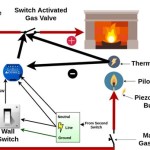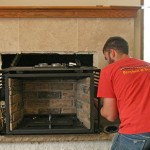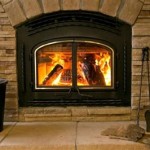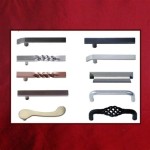Direct Vent Gas Fireplace Installation: A Comprehensive Guide
Direct vent gas fireplaces offer a convenient and efficient alternative to traditional wood-burning fireplaces. They are increasingly popular among homeowners for their ease of use, heating efficiency, and relatively simple installation process when compared to other fireplace types. This article provides a detailed overview of direct vent gas fireplace installation, covering key considerations, steps, and safety precautions.
Direct vent fireplaces function by drawing combustion air from outside the home and venting exhaust gases directly outside through a sealed vent system. This closed system eliminates the need for a chimney and significantly reduces the risk of carbon monoxide entering the living space. The vent system, typically consisting of two concentric pipes (one for intake and one for exhaust), can be routed horizontally through a wall or vertically through the roof. This versatility allows for installation in a wide range of locations within a home, even in rooms without existing chimney infrastructure.
Before commencing any installation, it is crucial to consult local building codes and regulations. These codes often dictate specific requirements for fireplace placement, venting materials, gas line connections, and safety clearances. Obtaining the necessary permits is also essential to ensure compliance and avoid potential fines or complications later on. Failure to adhere to local codes can jeopardize the safety of the installation and the structural integrity of the home.
Planning and Preparation
The initial stage of direct vent gas fireplace installation involves careful planning and preparation. This includes selecting an appropriate fireplace unit that meets the heating needs of the space and complements the aesthetic design of the room. Consider the BTU output of the fireplace, the size of the room, and the desired level of heat. The physical dimensions of the fireplace and the required clearances must also be carefully considered to ensure that it fits properly within the designated space.
Once the fireplace unit has been selected, the next step is determining the optimal location for installation. Factors to consider include proximity to an existing gas line, accessibility for venting, and aesthetic appeal. Ensure that the chosen location meets the minimum clearance requirements specified by the manufacturer. These clearances typically refer to the distance between the fireplace and combustible materials such as walls, furniture, and flooring. Precise measurements and calculations are necessary to avoid potential fire hazards.
Preparation also involves gathering the necessary tools and materials. This commonly includes items such as a pipe wrench, adjustable wrench, level, drill, screwdriver, safety glasses, gloves, sealant, and appropriate venting materials. The venting materials must be compatible with the fireplace unit and meet the requirements of local building codes. It is advisable to purchase a complete venting kit from the fireplace manufacturer to ensure compatibility and proper functionality.
Installation Process
The installation process of a direct vent gas fireplace typically involves several key steps. First, prepare the designated area by removing any obstructions and ensuring that the surface is level and stable. Install any necessary framing or support structures to accommodate the weight of the fireplace and provide adequate support for the venting system.
Next, connect the gas line to the fireplace unit. This should be performed by a qualified gas technician to ensure a safe and leak-free connection. The gas line must be properly sized and installed according to local codes and regulations. A shut-off valve should be installed in an accessible location for emergency situations and maintenance purposes.
Once the gas line is connected, the venting system can be installed. Follow the manufacturer's instructions carefully to ensure proper assembly and sealing of the vent pipes. The vent pipes should be properly supported and secured to prevent sagging or movement. The vent termination point, whether through a wall or roof, must be located in accordance with local codes to prevent the re-entry of exhaust gases into the home.
After the venting system is installed, the fireplace unit can be positioned and secured in place. Connect the electrical components of the fireplace, such as the igniter and the blower, to a dedicated electrical circuit. Ensure that all wiring connections are secure and properly insulated. Test the fireplace to verify that all components are functioning correctly.
Safety Considerations and Post-Installation Checks
Safety is paramount during and after the installation of a direct vent gas fireplace. Before operating the fireplace for the first time, conduct a thorough inspection to ensure that all connections are secure, the venting system is properly sealed, and there are no gas leaks. Use a gas leak detector to verify the integrity of all gas line connections.
It's crucial to review the manufacturer's instructions and operating manual to understand the proper operation and maintenance procedures for the fireplace. Pay attention to recommended cleaning schedules, safety precautions, and troubleshooting tips. Regular maintenance, such as cleaning the glass door and inspecting the venting system, can help ensure optimal performance and prevent potential problems.
Install carbon monoxide detectors in the vicinity of the fireplace to provide an early warning in the event of a carbon monoxide leak. Test the detectors regularly to ensure they are functioning correctly. Educate all household members on the signs and symptoms of carbon monoxide poisoning and the proper procedures to follow in case of an emergency. A properly installed and maintained direct vent gas fireplace can provide years of safe and efficient heating.
It is strongly advised that a qualified and licensed professional perform the gas line connection and initial start-up to guarantee safety and adherence to local regulations. While homeowners can undertake certain aspects of the installation process, engaging a professional for critical steps mitigates the risk of improper installation and potential hazards. A certificate of compliance from a qualified technician can also be beneficial for insurance purposes and future property transactions.
Understanding How Direct Vent Works Heat Glo

What Is A Direct Vent Fireplace Fireplaces Learning Center

Benefits Of Direct Vent Fireplaces

What Are The Best Ways To Vent A Gas Fireplace Zoroast
Gas Fireplace Venting Explained Heat Glo
Gas Fireplace Venting Explained Heat Glo

What Is A Direct Vent Fireplace Fireplaces Learning Center
.aspx?strip=all)
Benefits Of Direct Vent Fireplaces Regency Fireplace S

Gas Fireplaces Direct Vent Vs Free Fine Homebuilding

Vented Vs B Vent Direct Free Dixie S
Related Posts








